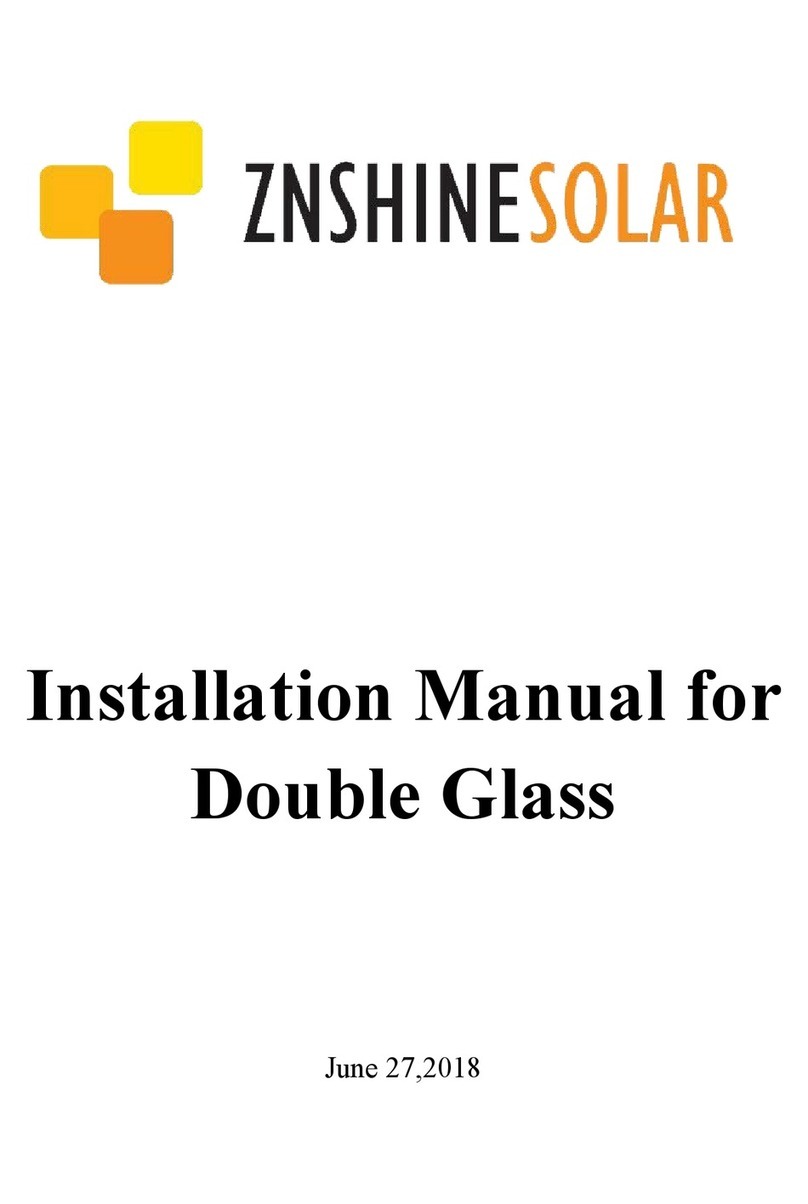
- 1 - Document No.:QES/ZX-RD-III033A
1、INTRODUCTION FOR USER MANUAL
This general manual applies to the installation, maintenance and use of the single glass solar modules
manufactured by ZNSHINE PV-TECH Co.,Ltd. (hereinafter referred to as “ZNSHINE SOLAR”). Failure to follow
these instructions could result in personal injury or property damage.
Installation and operation of PV modules requires professional skills and should only be performed by
qualified professionals. Please read the “Safety and Installation Instructions” carefully before using and operating
the modules.
The word “module” or “PV module” used in this manual refers to one or more single glass solar modules.
Please keep this manual for future reference.
1.1、DISCLAIMER
1、ZNSHINE PV-TECH Co., LTD reserves the rights to change this User Manual without prior notice. Please
refer to our product lists and documents published on our website at: https://www.znshinesolar.com as these
lists are updated on a regular basis.
2、Failure of the customer to follow the requirements outlined in this Manual during the installation of the
module will result in the invalidity of product's limited warranty.
3、ZNSHINE SOLAR is not responsible for any infringement of third party patents or any other rights arising
from the use of solar PV modules.
4、The information in this manual is based on ZNSHINE SOLAR’s knowledge and experience and is
believed to be reliable, but such information including product specification (without limitations) and suggestions
Do not constitute a warranty, expresses or implied.
1.2、LIMITATION OF LIABILITY
ZNSHINE SOLAR is not responsible for any form of damage, including but not limited to module operation
and system installation error, and personnel injury, hurt, and property loss resulting from failure to follow the
instructions in this Manual.
2、SAFETY PRECAUTIONS
2.1、WARNING
Before attempting to install, wire, operate and/or service the module and other electrical equipment, all
instructions should be read and understood. Direct current (DC) is generated when the battery surface of the
module is exposed to direct sunlight or other light sources, and direct contact with the live parts of the module,
such as terminals, may result in death of personnel whether connected to the module or not.
2.2、GENERAL SAFETY
ZNSHINE SOLAR modules are designed to meet the requirements of IEC 61215 and IEC 61730, application
class A. Modules rated for use in this application class may be used in system operating at greater than 50V DC
or 240W, where general contact access is anticipated. Modules qualified for safety through IEC 61730-1 and IEC
61730-2 and within this application class are considered to meet the requirements for safety class II equipment.
(1)All installation work must comply with the local codes and the relevant international electrical standards.
(2)ZNSHINE SOLAR recommends that PV module installation is conducted by personnel who have been
professionally trained in PV system installation. Operation by personnel who are not familiar with the relevant
safety procedures will be very dangerous.





























